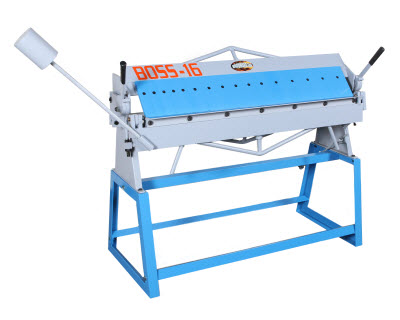In the metalworking industry, sheet metal fabrication involves several processes that facilitate the bending and forming of the metal in the desired form and size. Among all these techniques, roll forming and press brake forming are still widely used. Owing to their precision bending and easy-to-form process, they are widely used in automotive and industrial workshops with traditional as well as computer numeric control (CNC) machines. Both roll forming and press braking appear to be interchangeable, but they are different from each other. Would you like to know what makes press brake different from roll forming? Which sheet metal fabrication techniques you could use for your metal fabrication project? This post answers all these questions. So, stay tuned.
What is Roll Forming?
Roll forming is an industrial metal forming process. It makes use of complex equipment for continuous rolling of sheet metal to bend it into the desired form. The sheet metal strips go through a set of rolls attached to two stands. Each roll is responsible for performing an increment part until the desired section is achieved. Roll forming is an easy-to-perform process idea for producing complex shapes. It is considered more cost-effective than other sheet metal fabrication techniques. There are different types of roll forming machines available, including standardized rolling machines, side-by-side machines, single-duty roll forming machines, double-headed machines, and so on.
What is Press Braking?
Popularly known as brake forming, it is a metal deformation process, wherein a workpiece aligns along an axis. This can be achieved using a machine pressing tool, called press brake. It is one of the important types of machine pressing tools that clamp the metal piece between a set of dies and a punch for prearranged bending. There are countless benefits of using a press brake. However, it is highly preferred for producing precise bends. Owing to their increasing demand in several industries, it is easy to find them in a variety of specifications and types. Some of the most common press brake types include pneumatic press brake, mechanical press brake, hydraulic press brake, servo-electric press brake, and so on. Each has its benefits that contribute to its popularity.

Differentiating Factors between Roll Forming and Press Braking
The following are some important factors that differentiate roll forming and braking.
- Fabrication Design: It is important to consider metal fabrication shape and design before choosing any method. This is because roll forming and press braking follow different processes with varying lengths based on the complexity of the shape. Press braking handles a certain amount of bends each with a separate hit. However, roll forming forms linear shapes in one go.
- Length: This is another important factor to consider for differentiating these methods. Press braking workpieces have to be cut in a specific length before they enter the tool. However, roll forming is best suited for longer parts. For instance, a slit coil can be directly added to the roll.
- Material Selection: Some metal fabrication processes work well with specific materials. The type of material you choose has a great impact on your fabrication process. Also, it helps you save on costs. Press braking and roll forming work well with lightweight materials. This is because high-strength materials are difficult to roll form and press brake.
- Tooling Costs: Press brake involves an easier setup process that contributes to its comparatively lower cost. It is considered the least expensive bending process tool.
By now, you might have understood the importance of both types of equipment. Owing to their undeniable benefits, they can be an asset to your facility. Therefore, you must source them from a reliable industry manufacturer or supplier. Since 1966, Woodward Fab is proudly providing a vast range of sheet metal bending and fabrication tools. Their years of industry experience assures superior quality and customer satisfaction.
Related Post:
-
Sheet Metal Fabrication Trends 2024: What to Watch For
-
How the Electric Vehicle market is driving changes in sheet metal fabrication technology
-
Sheet Metal Bend Relief Guidelines: Ensuring Successful Fabrication
-
Cold Rolled Steel Sheets vs. Hot Rolled Steel Sheets: Which is Right for Your Project?
-
Essential Tools and Equipment for Ductwork Fabrication: Ensuring Efficiency and Quality